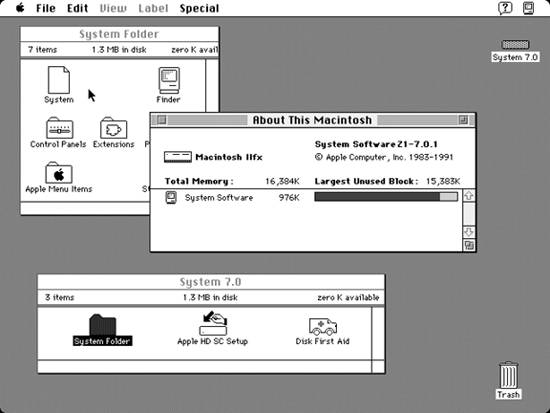Section 1.2. System 7
1.2. System 7In 1991, Apple introduced System 7, an upgrade that greatly modernized the Mac. It incorporated many features that would guide future development: seamless multitasking (albeit cooperative), color icons, personal file sharing, virtual memory, and a hierarchical System folder to help organize Control Panels and Extensions. The Mac interface also evolved for System 7, growing a bit more sophisticated as shown in Figure 1-2. Figure 1-2. The System 7 desktop System 7 also laid the foundation for three very important technologies:
Although System 7 was years ahead of every other operating system from the ease-of-use perspective, not all was rosy with this release. With all the new functionality, the Toolbox had become even more fragile than its predecessors. It turned out that cooperative multitasking, where applications are expected to play nice with each other, meant that any application could hog all the processor time and, in effect, lock up a system. And, most glaringly, the Mac OS did not provide memory protection between programs. This not only let applications run faster as well as enable all sorts of nifty customizations (also known as hacks), but it also let applications scribble into each other's memory space, inevitably corrupting the system. As Apple released new hardware, developers dreamed up new features that could be implemented only by using system extensions. While extensions had good intentions, they frequently conflicted with each other, which forced users to reboot their Macs several times a day. At this point, even though development continued on the Mac OS, eventually leading to OS 8, OS 9, and the Classic environment under Mac OS X, it was obvious to Apple that a radical overhaul was needed to provide a more solid foundation for the future. |
EAN: 2147483647
Pages: 166